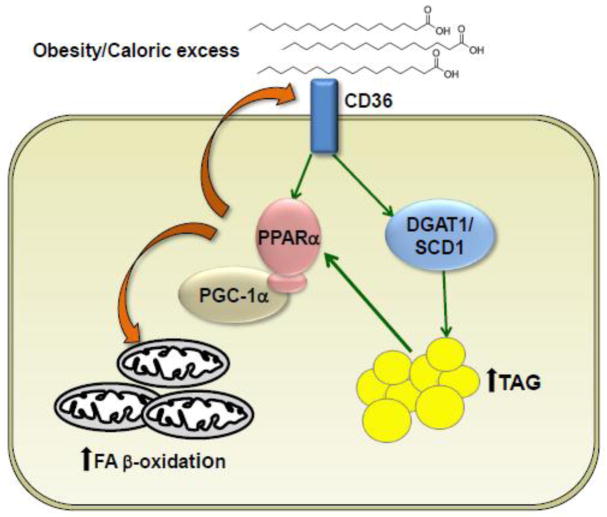Figure 2.
Mechanistic model of myocardial lipid accumulation relevant to obesity-related forms of heart failure that occur in the diabetic heart. There is an influx of fatty acids into the cardiac myocyte in the setting of obesity and insulin resistance. Excess intracellular fatty acids are stored as triglycerides or can act as activating ligands for PPARα. At least in the early stages of insulin resistance, activation of PPARα results in increased mitochondrial fatty acid β-oxidation. However, PPARα also activates fatty acid import pathways, including CD36, to begin a vicious cycle of increased import and storage of fatty acids. Eventually, PGC-1 levels fall and mitochondrial and cardiac dysfunction ensues. DGAT1, diacylglycerol acyltransferase 1; SCD1, stearoyl-CoA desaturase 1; TAG, triacylglycerol; PPARα, peroxisome proliferator- activated receptor alpha; PGC-1, PPARγ coactivator-1

